
ABU DHABI ART (21-23 NOV 2019) Lawrie Shabibi Presented Works by Mohamed Melehi
Nov 23, 2019 EVENT, Art Fair

The exhibition included several unseen paintings from private collectors that span from the late 1950s to the 1980s, which have never left the hands of their initial owners and have not been seen for a decade, as well as three recent paintings and a sculpture, directly from the artist.
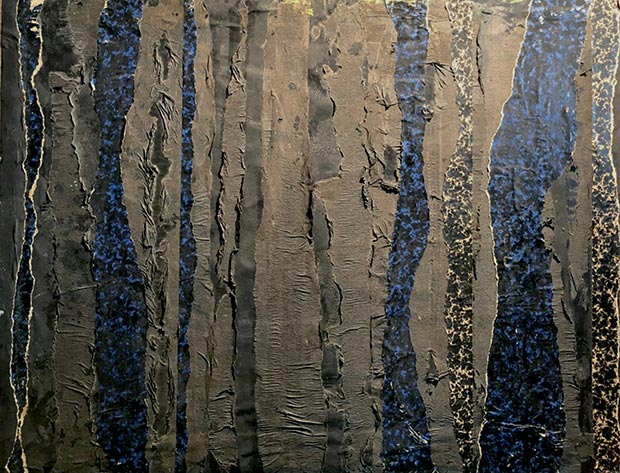 Mohamed Melehi Nuances 2, 1959. Papier maroufle and packing bags on board. 50 x 65 cm / Courtesy of Lawrie Shahibi and the artist
Mohamed Melehi Nuances 2, 1959. Papier maroufle and packing bags on board. 50 x 65 cm / Courtesy of Lawrie Shahibi and the artist
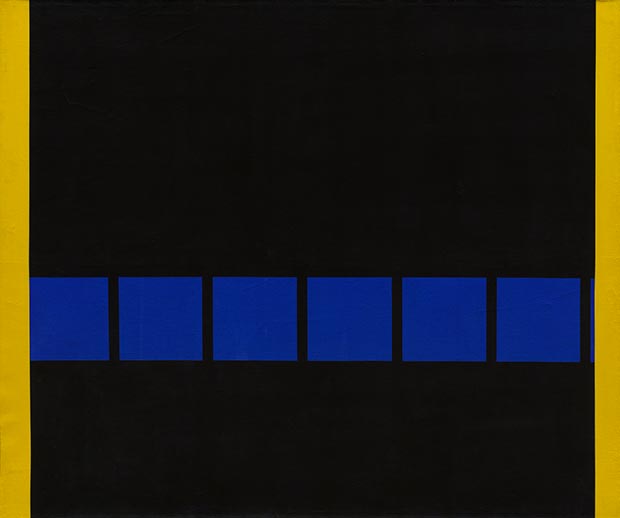 Mohamed Melehi The Blacks, 1963. Oil on canvas. 126 x 152 cm / Courtesy of Lawrie Shahibi and the artist
Mohamed Melehi The Blacks, 1963. Oil on canvas. 126 x 152 cm / Courtesy of Lawrie Shahibi and the artist
This comes at a time when Melehi’s work is the subject of a critically-acclaimed institutional exhibition New Waves: Mohamed Melehi and the Casablanca Art School Archives, shown first at the Mosaic Rooms in London, currently at MACAAL (The Museum of African Contemporary Art Al Maaden) in Marrakesh, and to be shown in March 2020 at the Concrete space in Alserkal Avenue, Dubai.
Chronologically, the works started from 1959 to 1963 where the artist encountered the cosmopolitan post-war art scene in Rome, and New York City sharpened his appropriation, first of tropes associated with Arte Povera and then of hard-edge abstract painting.
.jpg) Mohamed Melehi Untitled, 1970. Silkscreen print on paper. 80 x 60 cm / Courtesy of Lawrie Shahibi and the artist
Mohamed Melehi Untitled, 1970. Silkscreen print on paper. 80 x 60 cm / Courtesy of Lawrie Shahibi and the artist
From 1957 to 1961, Melehi lived in Rome, where he came into contact with avant-garde artists, such as Burri, Fontana, Vedova, and others. Melehi visited the exhibitions of American abstract expressionists, and he adopted the ideas of that time, such as abstraction, Zen philosophy, and contemporary cinema. He was so inspired by the works of Burri, that in Rome he produced his first works, initially experimenting with burlap, and later moved onto collaged compositions. In the rare collage Nuances 2 (1959), Melehi examines the subtle differences between shades of black, as he creates collages of vertical stripes.
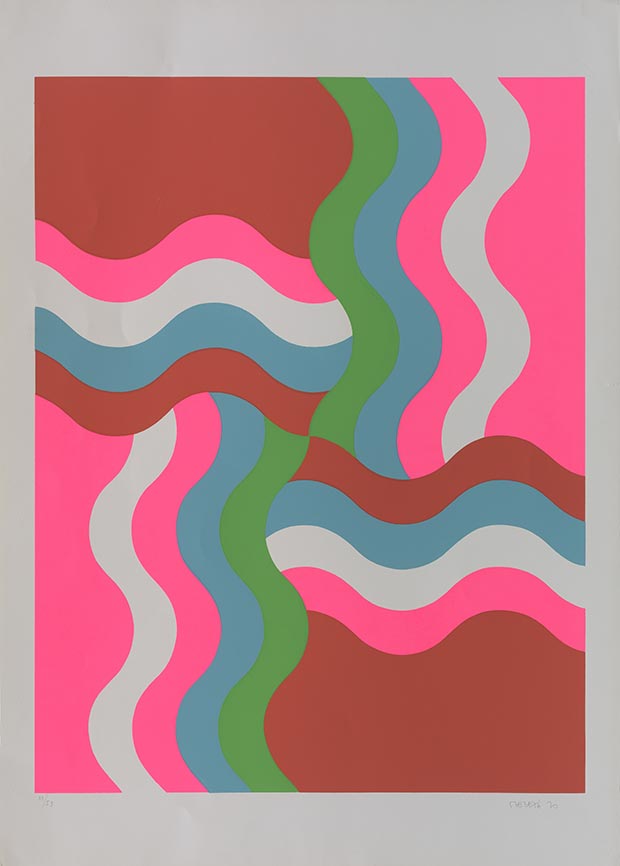 Mohamed Melehi Untitled, 1970. Silkscreen print on paper. 80 x 60 cm / Courtesy of Lawrie Shahibi and the artist
Mohamed Melehi Untitled, 1970. Silkscreen print on paper. 80 x 60 cm / Courtesy of Lawrie Shahibi and the artist
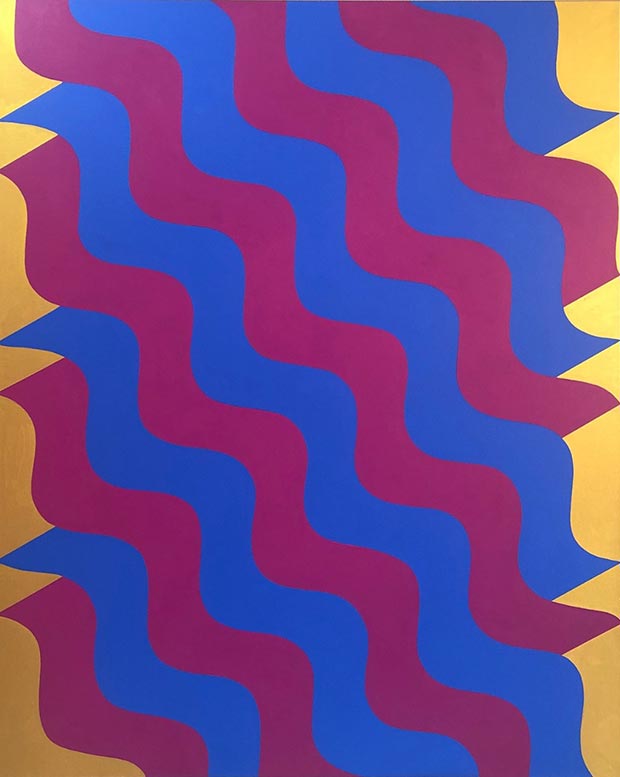 Mohamed Melehi Untitled, 2019. Acrylic on canvas, 174 x 140 cm / Courtesy of Lawrie Shahibi and the artist
Mohamed Melehi Untitled, 2019. Acrylic on canvas, 174 x 140 cm / Courtesy of Lawrie Shahibi and the artist
From Melehi’s time in New York (1962-1964) two important paintings were exhibited: Sky Above Manhattan (1963) and The Blacks (1963). This was a year he was included in group exhibitions at MoMA. In New York Melehi was influenced by the city's hard-edged abstract painters and fashionable ideas prevailing at the time. He also developed a passion for jazz, listening to music whilst he painted, which added a certain melodic and bold quality to his works. In both paintings, a grid of small squares alludes to the skyline, and office tower blocks of New York, adding an architectural aspect to his abstract works. Melehi's interest in cybernetics is also expressed pictorially - the squares appear like punch cards, used in computers from that period. In Sky Above Manhattan (1963), the squares lie diagonally across a biomorphic red form, that recurs in his paintings, sometimes suggestively.
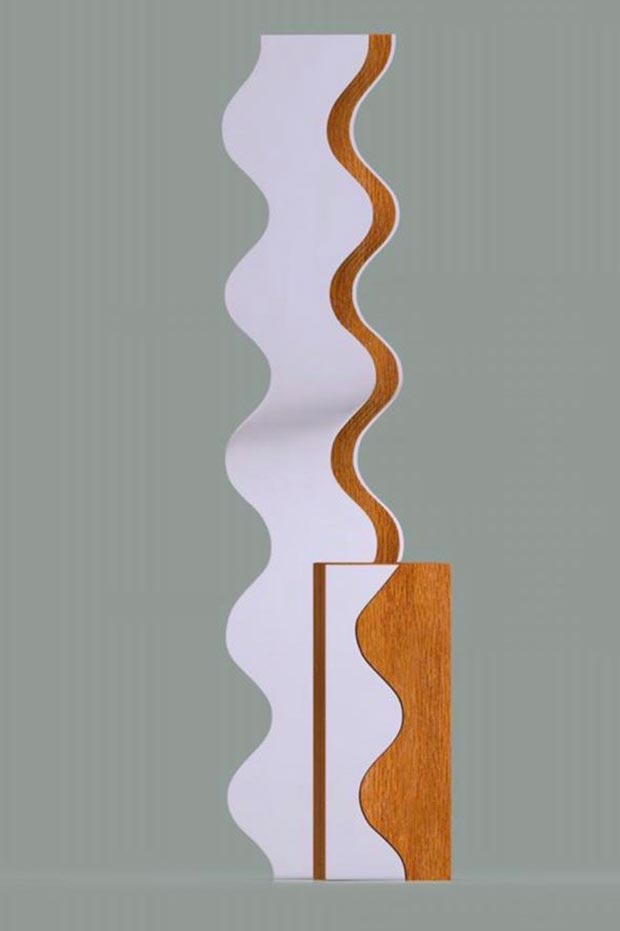 Mohamed Melehi Untitled, 2019. Stainless steel on wood, 200 x 35 x 40 cm / Courtesy of Lawrie Shahibi and the artist
Mohamed Melehi Untitled, 2019. Stainless steel on wood, 200 x 35 x 40 cm / Courtesy of Lawrie Shahibi and the artist
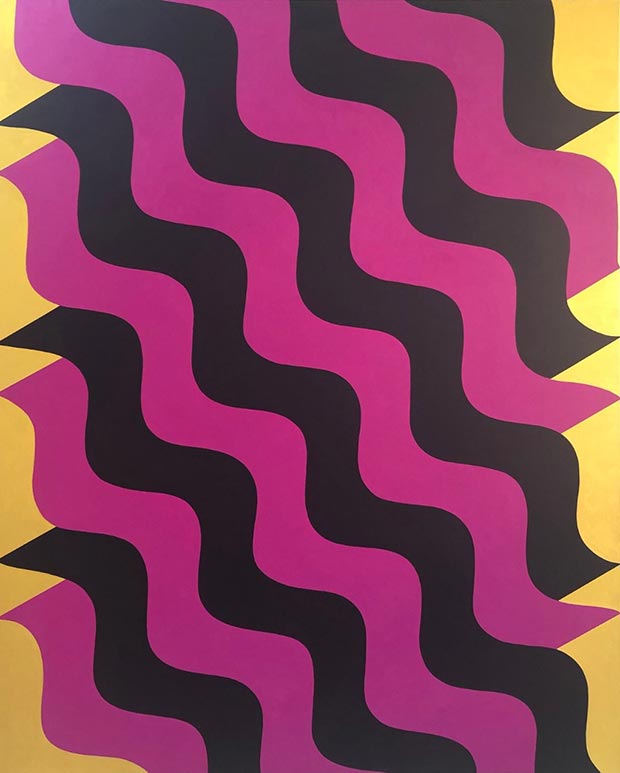 Mohamed Melehi, Untitled, 2019. Acrylic on canvas. 174 x 140 cm / Courtesy of Lawrie Shahibi and the artist
Mohamed Melehi, Untitled, 2019. Acrylic on canvas. 174 x 140 cm / Courtesy of Lawrie Shahibi and the artist
By the 1970s Melehi had returned to Morocco, to trigger a cultural and artistic revolution, at the École des Beaux-Arts of Casablanca, with artists Farid Belkhahia (1934–2014) and Mohammed Chabaa (1935–2013). Many silkscreens from this phase, were displayed. Melehi's waves, which are a central part of his work, first appeared in 1963. The form initially referred to the new magnetic tapes that began to be used in American TV channels for video signals. Melehi always had an interest in cinema and TV, which led him to become an artist back in the 1950s. His fascination with the digital symbols of these innovations led to the motif's incorporation into his paintings. By the 1970s Melehi's, paintings emphasize the curved line, hyper-graphism, and a clear chromatic palette. Silkscreen prints, such as these, are very rare and difficult to locate, especially in such good condition.
In the 1980s the artist’s knowledge of Moroccan popular craft and architecture is invested in a series of works “reframing†the waves – an exceptional silkscreen was exhibited from this period.
Melehi’s contemporary works are from 2019 and include new wave paintings from his Moucharabieh series, and Vertical Flood One, a stainless-steel sculpture on a carved wooden base. These new paintings evoke the composition of his earlier wave paintings but are on a much grander scale. The artist has rarely made sculptures like this, although his large-scale public sculpture Charamsuca Africana is on permanent display in Mexico City and has a similar form. The sculpture shows the artist’s affinity to cross-over between design, architecture, and art. Throughout his career, Melehi has worked with local artisans to make carvings, wall panels, and furniture out of local materials such as wood and ceramic.
Lawrie Shabibi's presentation at Abu Dhabi Art provides an insight into Melehi’s key role in the local development of art pedagogy and experimental practices in Morocco, and the opportunity to see rare and unseen works by this important and influential artist made over the past six decades.
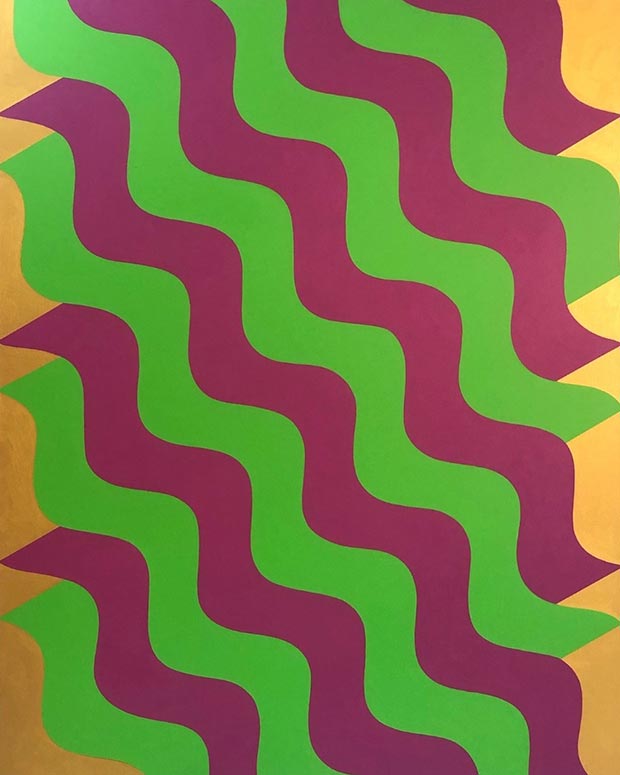 Mohamed Melehi Untitled, 2019. Acrylic on canvas, 174 x 140 cm / Courtesy of Lawrie Shahibi and the artist
Mohamed Melehi Untitled, 2019. Acrylic on canvas, 174 x 140 cm / Courtesy of Lawrie Shahibi and the artist
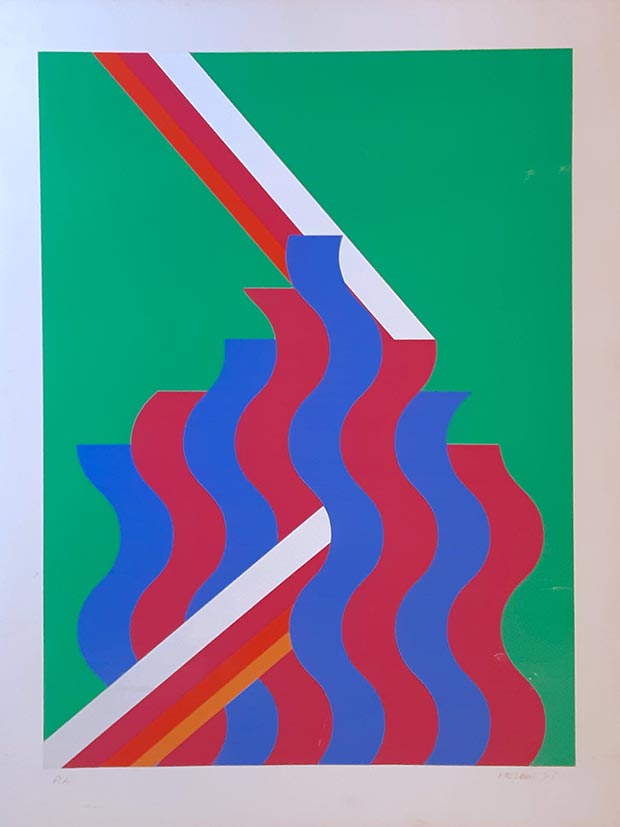 Mohamed Melehi Untitled, 1975. Silkscreen print on paper, 80 x 60 cm / Courtesy of Lawrie Shahibi and the artist
Mohamed Melehi Untitled, 1975. Silkscreen print on paper, 80 x 60 cm / Courtesy of Lawrie Shahibi and the artist
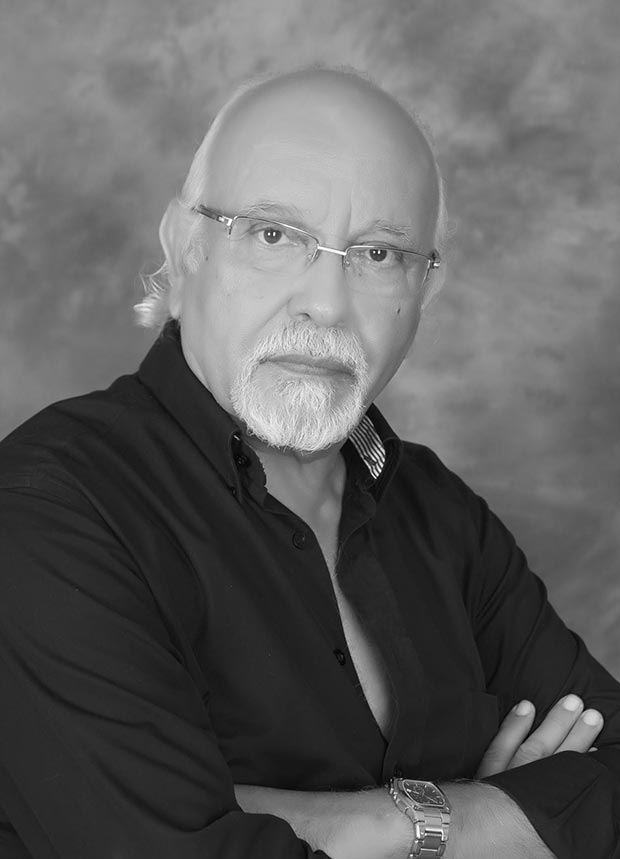 Mohamed Melehi / Courtesy of Lawrie Shahibi and the artist
Mohamed Melehi / Courtesy of Lawrie Shahibi and the artist
Mohamed Melehi (b.1936, Asilah, Morocco) graduated from the École des Beaux-Arts, Tétouan, Morocco, in 1955. He continued his studies abroad, learning fine art in Seville and Madrid, sculpture in Rome, and engraving in Paris. In the early sixties, he travelled to the United States, where he studied at Columbia University for two years before returning to Morocco in 1964. It was during this time that Melehi began to explore his cultural heritage as a primary source of inspiration and started using a bolder, more brilliant colour palette. In 1969, Melehi organized the first open-air group exhibition, held in Marrakech medina’s Jamaa el-Fna Square, in Morocco. Eliciting much acclaim from the public and art critics, this exhibition radicalized the country’s contemporary art scene.
Melehi was a Professor of painting, sculpture and photography at the Casablanca School of Fine Arts from 1964 to 1969. In 1978, Melehi and Mohamed Benaissa created the Al Mouhit Cultural Association, a non-political organisation with purely cultural objectives. The result of this venture is the Asilah Cultural Moussem, an annual festival held every summer. A highlight of the festival is the mural painting event, first held in April 1978, a project which has revitalized the formerly dilapidated appearance of the artist’s birthplace. Asilah is now celebrated for its vividly coloured murals, many of which have been created by Melehi.
Melehi is also President of the Moroccan Association of Plastic Arts and was the Director of Arts for the Ministry of Culture, from 1985 to 1992.
He has held numerous solo exhibitions including a retrospective at the Institut du Monde Arabe, Paris, 1995, and the Bronx Museum of the Arts, New York, 1984. He has participated in group shows in Casablanca, Tangiers, Rabat, Marrakech, Baghdad, Algiers, London, Paris, Rome, Zurich, New York, Chicago and Montreal. His work is held in international museum collections, such as Tate, London, British Museum, London, Centre Georges Pompidou, Beaubourg, Paris, Institut du Monde Arabe, Paris, MoMA, New York, and Mathaf: Arab Museum of Modern Art in Doha.
Comments
Add a comment